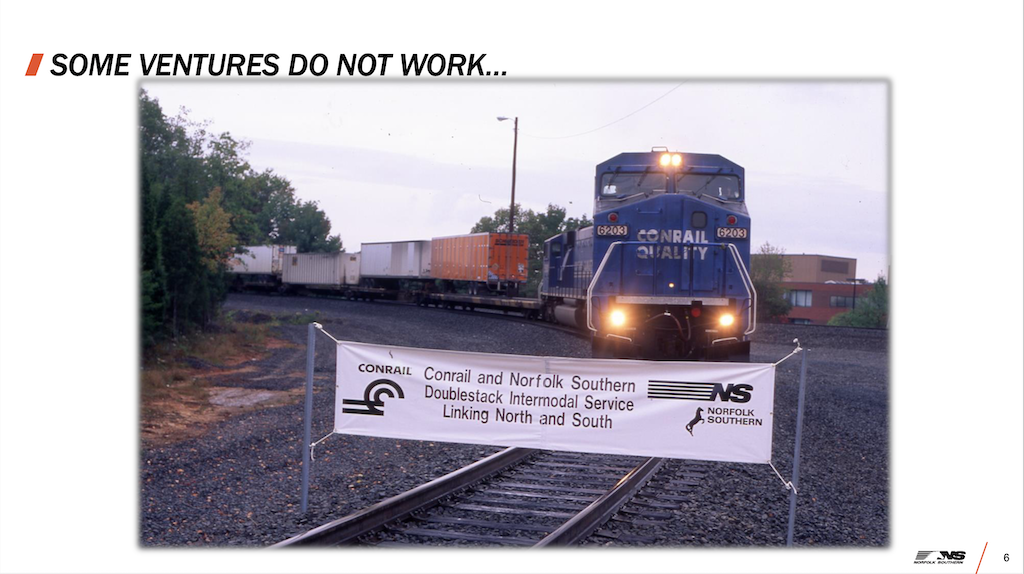
NEW YORK — BNSF Railway, Canadian National, and Canadian Pacific Kansas City are touting interline partnerships as a way to gain new volume without having the regulatory and service-meltdown risks associated with a merger.
But Union Pacific and Norfolk Southern say alliances are built on a foundation of sand, and can shift with the whims of each railroad in a partnership. “They just don’t hold up like one company that manages everything,” UP CEO Jim Vena told the RailTrends conference on Friday. “And they end. It’s as simple as that.”
Controlling service from end to end is one of the main selling points for UP’s proposed $85 billion acquisition of NS, the railroads have said.

Michael R. McClellan, Norfolk Southern’s chief strategy officer, drove that point home at the conference by going over the history of interline partnerships that have endured — or fallen apart — since the 1990s.
Since his days at Conrail, McClellan has been involved in 19 interline partnerships, from the creation of the EMP container pool in 1994 to the joint UP-NS intermodal service announced in September that links Louisville, Ky., with points on UP.
Eleven of those alliances are still in place today, including three joint ventures that are essentially permanent partnerships. “They’re all kind of operating,” McClellan says. “Some of them are doing great, some of them are kind of wobbly.”
Under the right circumstances, alliances can and do work, he says. But they are fragile: “These things can be temporary. And they change a lot,” he says.
The classic example of a partnership that floundered right out of the gate was the 1995 deal between NS and Conrail for joint double-stack intermodal service linking Atlanta and Northern New Jersey via their interchange at Hagerstown, Md.
McClellan showed a photo of the inaugural run, with two Conrail locomotives on the point of a single-stack intermodal train heading for the traditional first train banner that was stretched across the tracks in Manassas, Va. The banner proclaimed “Conrail and Norfolk Southern Doublestack Intermodal Service Linking North and South.”
Look what’s missing, McClellan says: “Our inaugural double-stack train had no double stacks on it.”
What the photo didn’t show, he says, was that the first train was three hours late. Rather than break through the banner, as intended, the train ran over it. Scrawled on the side of one of the locomotives: “Jesus Saves and Clinton Sucks.” Those things may be true, one executive quipped, but you don’t need to put that on your locomotive.
The final indignity? The anchor customers on the service were J.B. Hunt and APL — but none of their containers were on the train. Instead, the train was hauling boxes from rivals Schneider and EMP.
“That was an inauspicious start,” McClellan says.
None of the executives gathered trackside had smiles on their faces. “The Conrail people were embarrassed. The NS people were unimpressed. And the shippers were pissed,” McClellan says.
McClellan’s father, longtime NS strategic planner Jim McClellan, said it was apparent that if Conrail didn’t care enough to get the inaugural run right they wouldn’t have a commitment to the service over the long run.
He was right. The interline service never worked. Given the choice of how to best use containers and well cars, Conrail would make the rational decision to prioritize the 900-mile run to Chicago instead of the 250-mile run to Hagerstown for its portion of the New Jersey-Atlanta service. “It was a terrible move for them,” McClellan says.
It’s a similar dynamic today in the watershed area, the swath of territory within a few hundred miles of the Mississippi River, the de facto dividing line between the Eastern and Western railroads. UP and NS say that by merging and eliminating interchange friction and short hauls for one or both railroads, they can pick up significant growth from the watershed.
What made a difference in the Atlanta-New Jersey lane was the Conrail split between CSX and NS.
“This never took off until we took over Conrail. We got this lane right, and now this is really one of the foundational intermodal lanes in our network,” McClellan says. “It would have never happened had we not acquired that part of Conrail.”
Each railroad in an interline agreement always works to protect its own interests, McClellan says, and are reluctant to invest when there’s no guarantee of an adequate return.
After the Conrail transaction, NS went on to make significant investments in intermodal corridors and terminals across its expanded network, which after a decade had led to 2.2 million additional container and trailer loads per year, McClellan says.

The UP-NS merger should unleash similar investments and growth and be a turning point for the rail industry, McClellan says. “The UP and the NS are going to spend a lot of money doing what we need to do, which is grow this business,” he says.
Earlier in the conference, BNSF Chief Marketing Officer Tom Williams touted the BNSF-CSX haulage rights deal that gives BNSF direct access to the Fairburn terminal outside Atlanta via the railroads’ interchange in Birmingham, Ala. The deal was signed in 2006.
BNSF and CSX built on that agreement in August, when they launched new interline service linking the Southwest and Southeast. This month they expanded the partnership by connecting Los Angeles with points on CSX in the Midwest and Northeast.
Several longtime rail executives say they have never seen so many new partnerships crop up as have been announced in the last couple of years. They include the CN-UP-Ferromex Falcon Premium service, CPKC and CSX service linking Mexico and Texas with the Southeast, and CN and CSX joint international intermodal service from Prince Rupert, British Columbia, to Nashville, Tenn., via their interchange in Memphis.
Surface Transportation Board merger review rules require merging railroads to show that projected merger benefits cannot be achieved in other ways, such as alliances.
RailTrends is sponsored by independent analyst Anthony B. Hatch and trade publication Progressive Railroading.
— To report news or errors, contact trainsnewswire@firecrown.com.
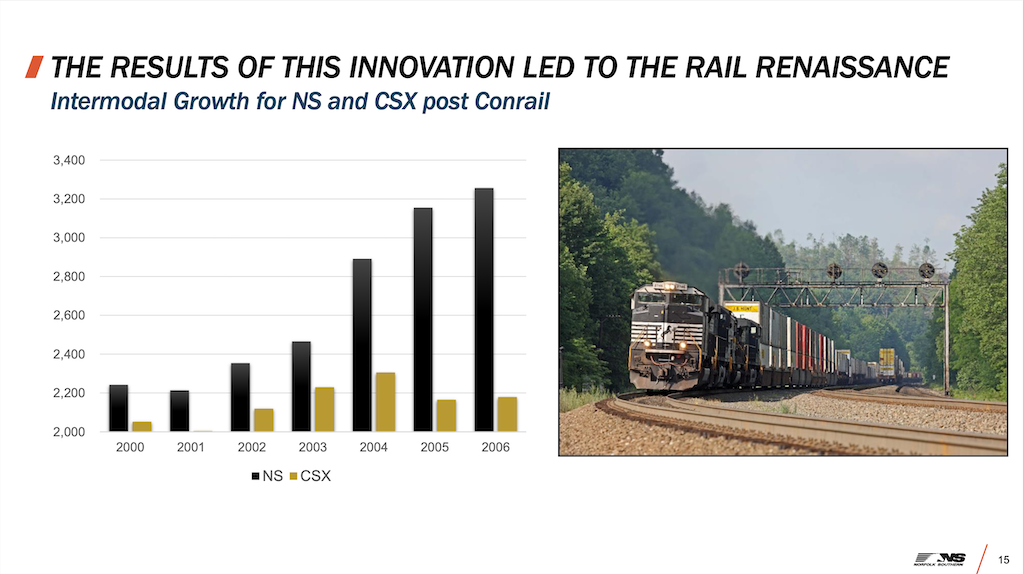







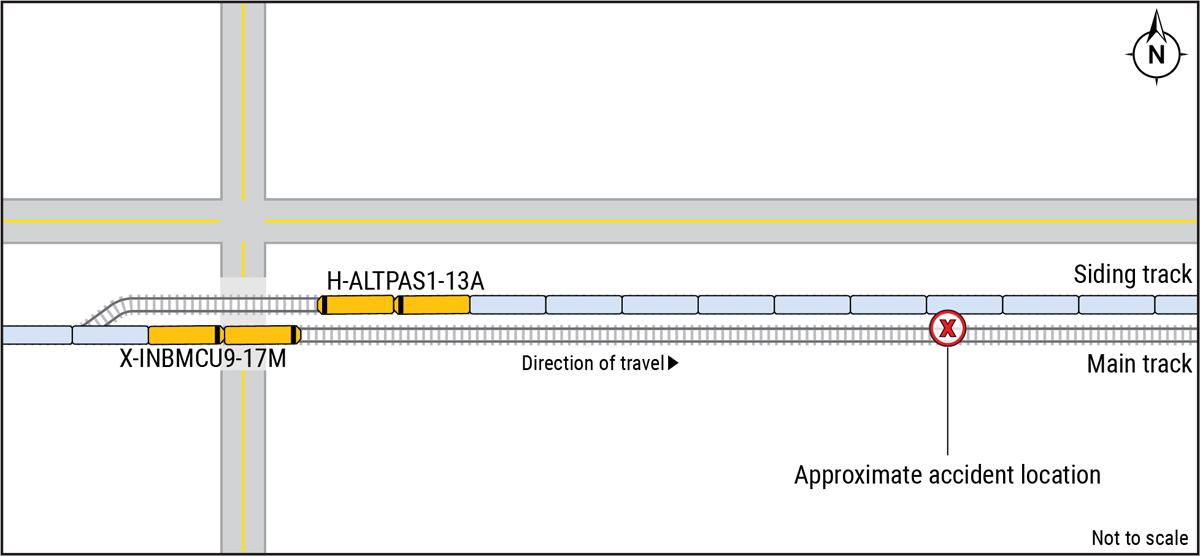



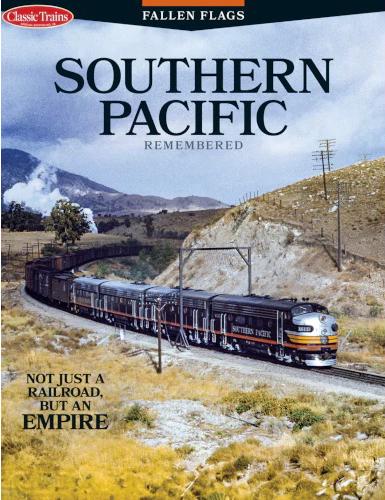

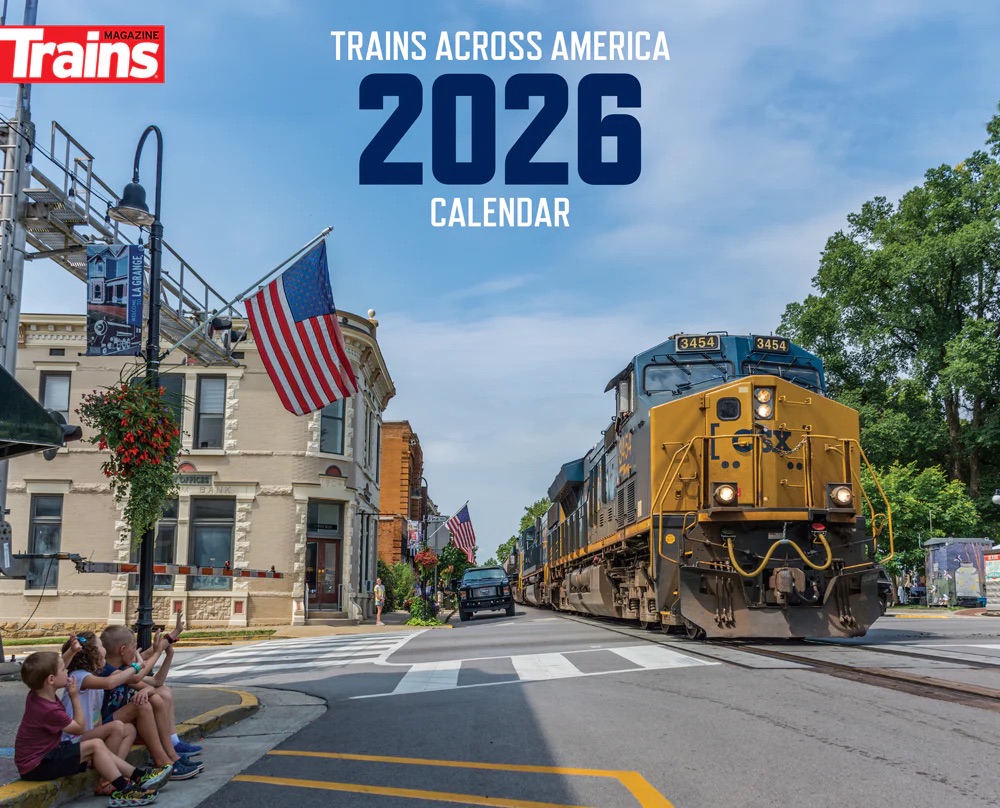
I often wonder if these partnerships work out well would they inevitably lead to a merger?